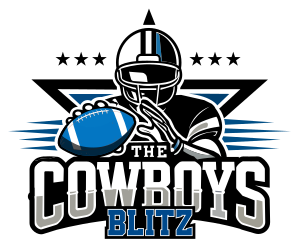AJ Brown.
Philly got him for a 1st and I think 4th rounder.
Brown wanted a new contract in Tennessee and Tennessee basically came out and said they weren't willing to pay Brown what he wanted. So they were somewhat boxed in given they wouldn't give Brown a contract he wanted and would like have to trade him.
And Philly still had to pay a premium in picks AND then hand over a $100 million dollar, 4 year contract.
Fair answer. And actually, it was a 3rd, not a 4th that PHI gave up.
So what explains the difference in return in trade?
Is it, as has been suggested, that Stephen, Jerry and Will were simply not judicious/discerning/intelligent enough to realize they could have gotten more?
There appears to be no other options than that one.
So, if you
(universal you, talking to all readers of this post) are content with that explanation, then this is where you probably should disengage and move on to another post... wish you well, and see you in another thread some time. Bye.
______________________________________________________________________________________________________________________
Okay, now that those folks have moved on, here are a few thoughts for the rest... ie, those who aren't that prone to persuasion that the difference is explained by competence.
First, the thing that "cannot not" be dismissed is simply that us on the outside are never privy to conversations on the inside... no hidden cams or mics. We cannot know with any good faith and confidence what offers were on the table for Amari besides the Browns' offer. What we should be able to assume, at least those of us who believe in self-interest as a natural motivator, is that the Browns' offer was the best offer on the table
at that time in March.
And related to that same idea.... we "cannot not" admit that we could have known who else might have been willing to make a better deal for Amari during draft week in late April, ie when the Eagles/Titans deal for Brown was made.
Second, was it that DAL FO accepted too little? Or, is the real story that the PHI FO was over-eager and paid too much? How does one make an objective assessment?
Obviously, the first go-to is to look at their 2022 stats so far. Incredibly similar. 39 catches each, 5 TDs each, AJ with about 100 more yards, though having played 7 games to Amari's 8 at this point. Regardless, both on track to have 1000 yards, and a season that will get strong Pro Bowl (or whatever we're playing this time) consideration.
Advantage: Eagles
Even if we say a 1st and a 3rd is a bit much (recalling that Amari only cost a 1st, and that the regard for both was within the same ballpark after 3 seasons)... it feels more right to say the greater miscalculation was to accept just a 5th rounder and a 6th round pick flip worth ~10 slots for Amari.
So is that to say then that the Cowboys' FO was just too headstrong, and if there wasn't a team willing to strike a better deal, they should have adapted and held on to Amari at least another month? Because that seems to be what that suggests.
No.
Here are things that get lost, and left out of the calculation... each is compelling on its own, but when you put them all together, they represent substantially compelling reason to make the March deal, and not wait to see if something better came along...
1. Their free agency pursuits were established, and freeing up some money was
immediately important.
2. It's no secret that Amari's 2021 decisions that led to availability issues frustrated the owner, and he's not been bashful to say he believed his $20m players had to show a greater team-first attitude than the rest, that that comes with the territory. Right or wrong, the assessment had been made that Amari was the kind of receiver who gets stats but can't be relied upon at critical times.
And here's what really gets lost, in my estimation...
3. Amari's new team would control him for 3 seasons... ie, and importantly, his age 28, 29, and 30 seasons.
A.J.'s new team would control him for 5 seasons... ie, importantly, his age 25, 26, 27, 28 and 29 seasons.
Thus, the scales of trade justice re-center significantly from where I sit.
- PHI was/is getting those age 25-27 prime years... that CLE was/is not.
- PHI was/is getting two seasons' worth of additional production that CLE is not.
Bottom line... it makes sense that PHI would pay appreciably more than DAL even if we just take #3 into account.
But when one also accounts for the context of #1 and #2... it eliminates the question of competence. It was a rational decision given all of the factors that came into play.

 The Cowboys were not gonna give up draft capital for him and they did not want his salary. Don’t be gullible. The Cowboys believe they have wide outs in Tolbert/Brown/Washington. They believe Tyron is coming back in a month. If some how the offense needs another, they will look at OBJ in December.
The Cowboys were not gonna give up draft capital for him and they did not want his salary. Don’t be gullible. The Cowboys believe they have wide outs in Tolbert/Brown/Washington. They believe Tyron is coming back in a month. If some how the offense needs another, they will look at OBJ in December.